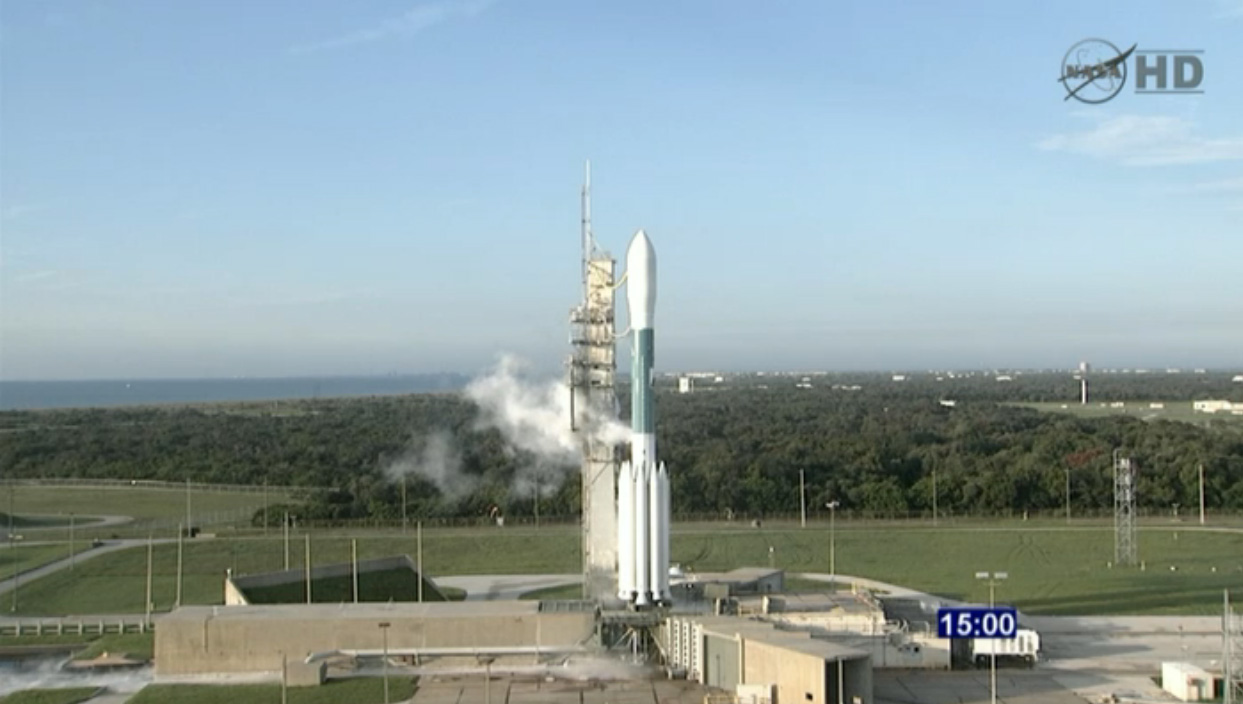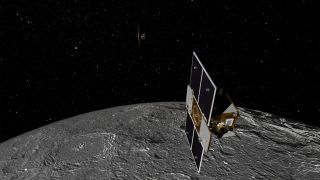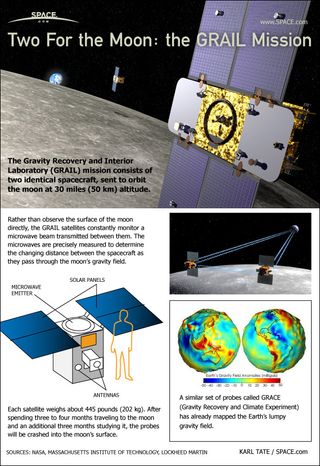NASA Hopes to Launch Delayed Moon Gravity-Mapping Probes Today

After two days of delay caused by bad weather and a technical glitch, NASA is once again ready to launch two probes toward the moon to unlock the secrets of lunar gravity.

The twin Grail spacecraft are expected to launch from Florida's Cape Canaveral Air Force Station today (Sept. 10) at 8:29 a.m. EDT (1229 GMT), with a second opportunity available at 9:08 a.m. EDT (1308 GMT), if needed, NASA officials said.
The $496 million moon probes were initially slated to launch atop their unmanned Delta 2 rocket on Thursday (Sept. 8), but unacceptable high-altitude winds forced NASA to delay the liftoff.
Another chance on Friday was called off to give engineers time to assess the rocket's propulsion system after a potential glitch was detected.After a series of reviews, the team concluded that there are no issues with the rocket or its propulsion system, NASA officials said. [Photos of NASA's Grail Moon Gravity Mission]
Today's weather forecast is more optimistic, and current predictions show a 60 percent chance of acceptable conditions at the time of launch, agency officials said.
NASA has specific limits for acceptable launch weather conditions, with high winds, rain, thunder and lightning all present potential safety risks. For example, high upper level winds can affect the way rockets fly through Earth's upper atmosphere as they blast into orbit.
The agency will closely monitor weather conditions overnight in preparation for tomorrow's attempt. The Grail mission (whose name is short for Gravity Recovery and Interior Laboratory) has a 42-day launch window that extends through Oct. 19, officials have said. [Video: Grail's Mission to Map Moon Gravity]
Get the Space.com Newsletter
Breaking space news, the latest updates on rocket launches, skywatching events and more!

The twin Grail spacecraft, called Grail-A and Grail-B, will closely examine the composition of the lunar interior, and will make detailed and precise maps of the moon's gravitational field. The three-month mission is expected to help scientists solve mysteries of the moon's origin and its evolution since the natural satellite was formed 4.6 billion years ago.
Researchers are also hoping to use Grail's observations to better understand how other large, rocky bodies in the inner solar system were formed.
You can follow SPACE.com staff writer Denise Chow on Twitter @denisechow. Follow SPACE.com for the latest in space science and exploration news on Twitter @Spacedotcomand on Facebook.
Join our Space Forums to keep talking space on the latest missions, night sky and more! And if you have a news tip, correction or comment, let us know at: community@space.com.

Denise Chow is a former Space.com staff writer who then worked as assistant managing editor at Live Science before moving to NBC News as a science reporter, where she focuses on general science and climate change. She spent two years with Space.com, writing about rocket launches and covering NASA's final three space shuttle missions, before joining the Live Science team in 2013. A Canadian transplant, Denise has a bachelor's degree from the University of Toronto, and a master's degree in journalism from New York University. At NBC News, Denise covers general science and climate change.











